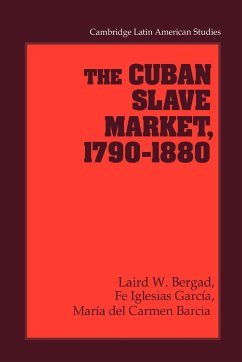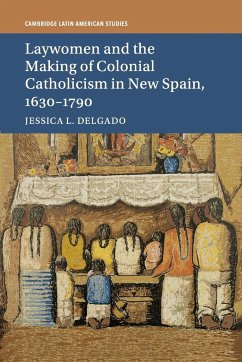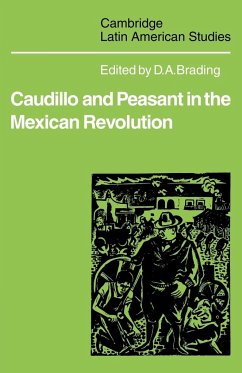
The Cuban Slave Market, 1790 1880
Versandkostenfrei!
Versandfertig in 1-2 Wochen
53,99 €
inkl. MwSt.

PAYBACK Punkte
27 °P sammeln!
Examines the yearly movement of slave prices and changes in the demographics of the Cuban slave market from 1790 to 1880.Slavery was in many ways the fundamental institution in colonial Cuba, whose economy was based on the export of sugar from the slave-worked plantations. This volume presents a quantitative study of Cuban slavery from the late eighteenth century until 1880, the year slavery was formally abolished on the island. The core of this study is an examination of the yearly movement of slave prices and changes in the demographic characteristics of the slave market. Based on data from ...
Examines the yearly movement of slave prices and changes in the demographics of the Cuban slave market from 1790 to 1880.
Slavery was in many ways the fundamental institution in colonial Cuba, whose economy was based on the export of sugar from the slave-worked plantations. This volume presents a quantitative study of Cuban slavery from the late eighteenth century until 1880, the year slavery was formally abolished on the island. The core of this study is an examination of the yearly movement of slave prices and changes in the demographic characteristics of the slave market. Based on data from the notarial protocol records of the Archivo Nacional de Cuba, this book establishes precise price trends for slaves by age, sex, nationality, and occupation, and considers a number of other variables including the prices of coartados (slaves who had begun the process of buying their freedom) and the patterns of emancipation. Incorporating over 30,000 slave transactions from three separate locations in Cuba - Havana, Santiago, and Cienfuegos - this work comprises the largest extant database on any slave market in the Americas.
Table of content:
1. Introduction: prices and the historiography of slavery; 2. Sources and methods of data collection; 3. The development of African slavery and Cuban economic history; 4. The price structure of the Cuban slave market, 1790-1880; 5. Regional variations in the Cuban slave market: Havana, Santiago, and Cienfuegos; 6. Coartación and letters of freedom; 7. Conclusions and comparative perspectives.
Slavery was in many ways the fundamental institution in colonial Cuba, whose economy was based on the export of sugar from the slave-worked plantations. This volume presents a quantitative study of Cuban slavery from the late eighteenth century until 1880, the year slavery was formally abolished on the island. The core of this study is an examination of the yearly movement of slave prices and changes in the demographic characteristics of the slave market. Based on data from the notarial protocol records of the Archivo Nacional de Cuba, this book establishes precise price trends for slaves by age, sex, nationality, and occupation, and considers a number of other variables including the prices of coartados (slaves who had begun the process of buying their freedom) and the patterns of emancipation. Incorporating over 30,000 slave transactions from three separate locations in Cuba - Havana, Santiago, and Cienfuegos - this work comprises the largest extant database on any slave market in the Americas.
Table of content:
1. Introduction: prices and the historiography of slavery; 2. Sources and methods of data collection; 3. The development of African slavery and Cuban economic history; 4. The price structure of the Cuban slave market, 1790-1880; 5. Regional variations in the Cuban slave market: Havana, Santiago, and Cienfuegos; 6. Coartación and letters of freedom; 7. Conclusions and comparative perspectives.














